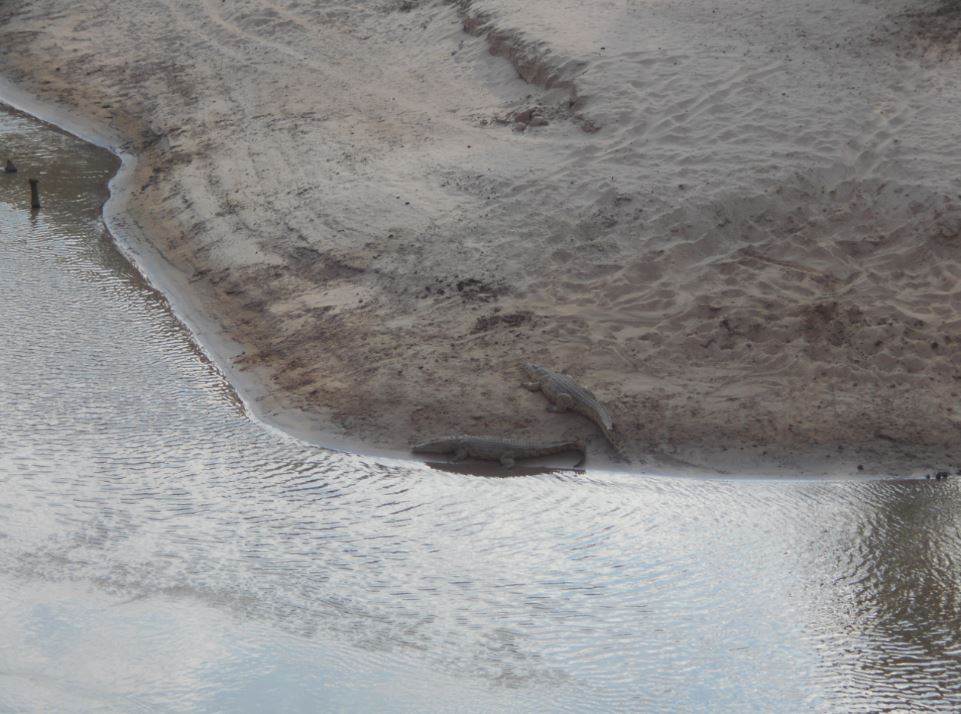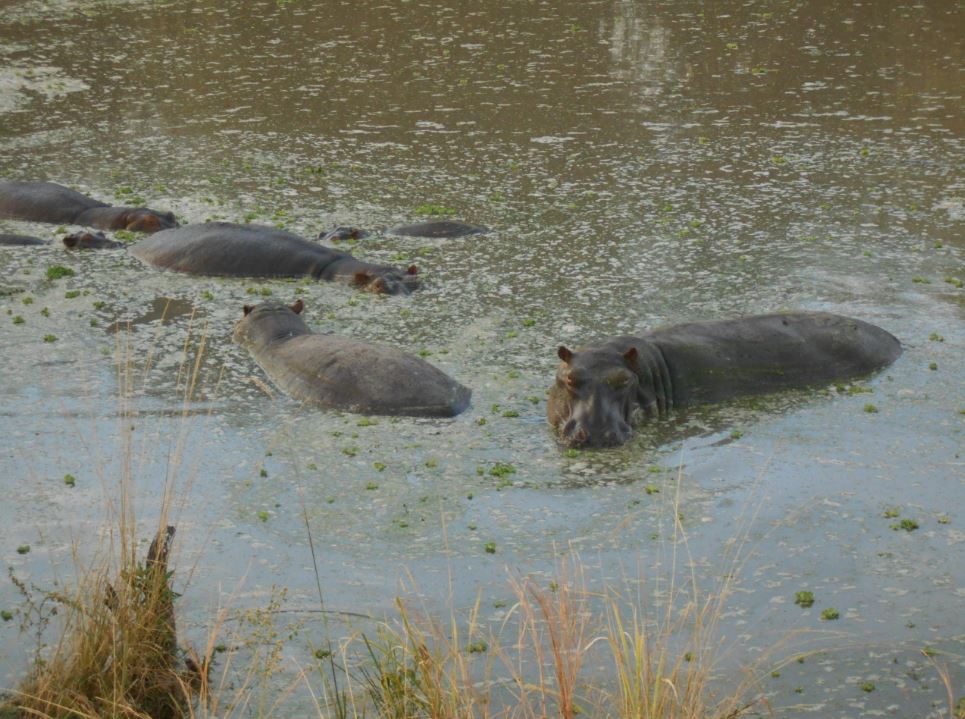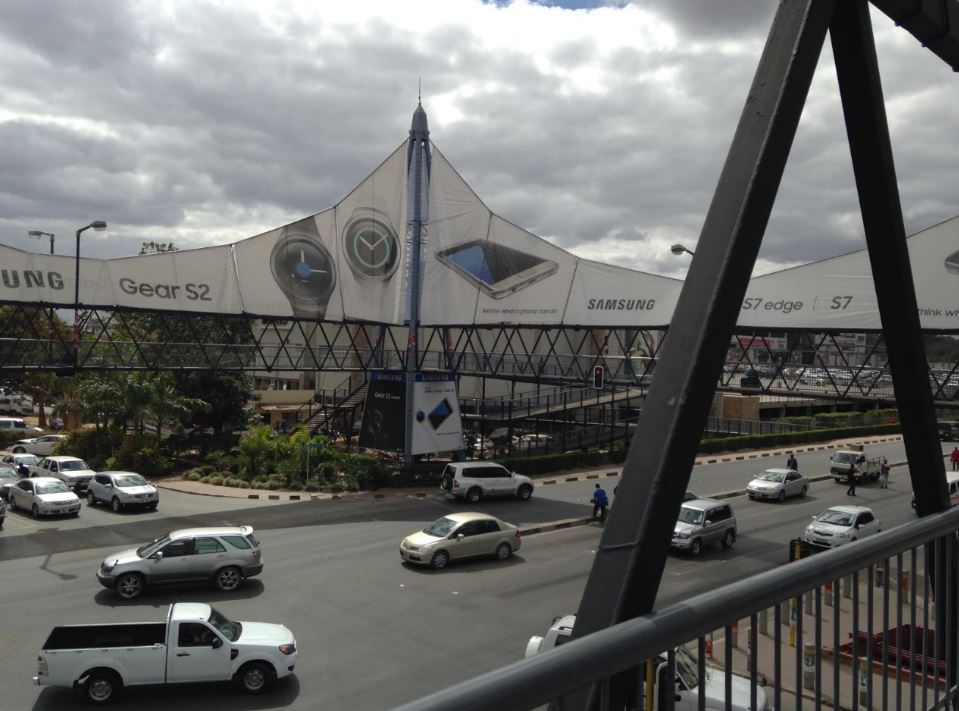South Luangwa National Park Game Drives – Part Two
Claire and I were extremely excited about the second round of game drives at South Luangwa National Park. The previous day had started off slowly, but after spotting the leopard in the evening, anything felt possible. As with the day before, we set off around 6am with David as our guide for another four hour ride with a tea break in the middle somewhere. And almost instantly we were presented with the most magnificent sight. With the sun still low in the sky we came to the edge of a river, and out in the water was a group of elephants. There were around seven or eight elephants and with them was a small baby. All of the animals were washing, drinking and splashing around. The baby was squirting water all over the place with its trunk and the adults were trumpeting loudly. After watching for a few minutes the elephants all made their way out of the water onto the open dry land and shook off before all running to a ridge, above which were some trees. We’d never seen elephants run before and it was quite an incredible sight. All of them were galloping along like horses in a race, with the little one just about keeping up at the rear. They then made it to the ridge and all clambered up before disappearing into the trees.
We were buoyed by such a great start to the day and you could tell that even David was pleased with what he’d seen. We continued along our way and came across yet more hippos lounging around in the mud. “Hippos,” said David, “look like pigs and lots of people thought that they were closely related to pigs. But after research scientists discovered that they are, in fact, closely related to the dolphins and the whales of the ocean, evolutionarily speaking.” Claire leant in to me and whispered: “the Christians aren’t going to like that.”
After leaving the hippos and seeing plenty more antelope, giraffes and zebras, we finally came across some lions. Sleeping in the field was a beautiful male lion, that David told us was named Garlic – his brother is somewhere in the park and is called Ginger – and with him were two females who he would mate with. Claire whispered to me asking: “Did he say the lion’s name is Gary?”. David went on to explain that in order to keep the males around for longer, the females will go through a fake heat period. This means that the male will stay around to mate, but the lioness won’t get pregnant. After around five minutes a number of other cars had turned up, meaning there were about thirty sets of eyes watching the animal relaxing on the grass. David said that they would usually mate every twenty minutes or so, so we hung around to see. But the lions didn’t put on a show. I guess having that many cars around probably put them off.

The impala is one of the more common antelope that we saw and David pointed out the markings on their behinds. “The lines on their bums spell out the letter M,” he said, “so we call them Bush McDonalds.” Speaking of antelope bums, the water buck, a big powerful looking breed of antelope also has markings on their behinds. The females have large white circles on their rear ends which has led to some people calling them the toilet seat antelope. Male water bucks are fantastic creatures, tall and muscular with large pointed horns. After our tea break we spotted a bunch of buffalo hiding in the trees. As we drove from the open plain into the bushes and trees we were suddenly surrounded by them. Our car startled them and sent them running off deeper into the thicket. David suggested that they’d probably been hassled by lions all night and that was why they were so flighty. From looking at them I can be sure that you’d have to be pretty brave to hassle them. They are gigantic with huge menacing horns on top of their large heads and look as if they could do a lot of damage if they wanted to.
We made it back to the camp pretty pleased that we’d seen lions, and were even more excited about the potential animals that we might see on the afternoon drive. It was to be the last game drive that Claire and I were to go on in South Luangwa National Park and it was also the last drive for Kate, Cristina and Christine, so all five of us were rooting for a good turn out. What we got was more than any of us were expecting.
We were out driving and within five minutes we spotted some lions sleeping under a bush. However, there were a few cars around them and they were hidden quite nicely, so we only stayed for a few minutes before heading off in search of more. Half an hour or so had passed when David spotted some more lions in the distance. He noticed them and put his foot down speeding along the plain so we could get to them before they decided to get up and move on. As we got near to the lions I noticed something familiar in the corner of my eye. I looked over and saw a leopard relaxing in a small ditch. “Leopard,” I shouted, trying to make my voice loud enough for David to hear down at the front of the car, but not too loud that I scared the cat away. David heard me, and thirty seconds later he had positioned the car across the ditch from where the leopard was lying. We had seen leopards a few times since landing in Africa, but this was the first one we’d seen in the day. I was so pleased that I’d spotted it, as it is apparently very rare that you come across these cats in daylight. It’s markings were fantastic in the torchlight the previous night, but in the clear light of day they were beautiful. We sat in silence and watched the cat enjoying a nap in the late afternoon and it then got up for a stretch before we moved on to see the lions that we were initially headed towards.


As we pulled up to the lions we noticed that they were all sound asleep. Again, it was one male and two females, which meant that we’d come across Garlic – Gary to Claire – and his mini pride. One of the females was sleeping on top of a bush. The branches were sticking up between her legs and she was all twisted up. It did not look comfortable, though she seemed happy enough. After taking plenty of pictures and watching the lions in their slumber, we headed off to see what else the park had to offer. A mere ten minutes later and we were sat watching a big group of elephants that included three young babies. The babies were playing together with one climbing on top of a rock and whacking the other with its trunk. One of the babies was also being rather mischievous and pulling the tails of the others with its trunk. We managed to get some good photographs and even caught the babies playing on video. In the next fifteen minutes or so we were also able to see a wildebeest, which was amazing as they don’t usually hang around on their own and are hard to spot; a white tailed mongoose and its baby; and a kudu. The kudu was a very elegant animal with gigantic horns. It had a big beard hanging down its neck and had some very nice markings. There was one white stripe across its face along its eyes that made it look a bit like Adam Ant.
We stopped for sundowners on the edge of a dried up river. I had a nice cold Mosi, a local beer, and Claire drank a Savannah Cider. I took the chance to have a good chat with David the guide. It turns out that South Luangwa National Park was the first in Africa to offer game drives and walking safaris and because of this the park has incredibly high standards. David had to study for four years to become a qualified guide, which explains why he has such a vast amount of knowledge. He said that the course he took was half in the classroom and half out in the field and he went on to say that the exam was very tough. In his class, when he took the exam in 2011, there were 48 people. He was one of only two who passed the exam. Once he passed his exam he then had to take a walking safari course, first aid training, and a mechanics course so he is able to fix the safari trucks if they break down in the field. We were so very grateful to David as he was a brilliant and knowledgeable guide who managed to make our two days out in the park as enjoyable as they could be.

Claire and I with David
After polishing off our drinks we hopped back in the truck and the spotlight was once again switched on. We were off again for the last few hours of our game drive, hoping we might get to see some wild dogs or hyenas. Since we went on our first safari months ago in Uganda, Claire and I have been hoping to see hyenas. Earlier that morning we had seen two, but both were too far away and disappeared within seconds of us seeing them. A few minutes later and we were in a big field. David and his team mate with the light had spotted another leopard. This one was crouched down hunting a large group of impala. He was slowly creeping forward getting nearer to his prey, stopping occasionally and rolling in the dry dirt. “Leopards have a scent,” said David, “so he is rolling in the dirt to hide his scent from the impala.” We didn’t want to get in the way of his next meal so we slowly and quietly made our way away, leaving the cat to hunt in peace.
As we were driving along in the pitch black darkness, our man with the spotlight caught a glimpse of something. As we pulled up along side it we noticed that it was a spotted hyena. The huge, doglike predator had giant forelimbs that made it look rather odd. It hung around for a few minutes surveying the scene allowing us to get a good look at it. We were so pleased to finally see a hyena in the wild. They really are extraordinary to look at.








Comments are closed here.